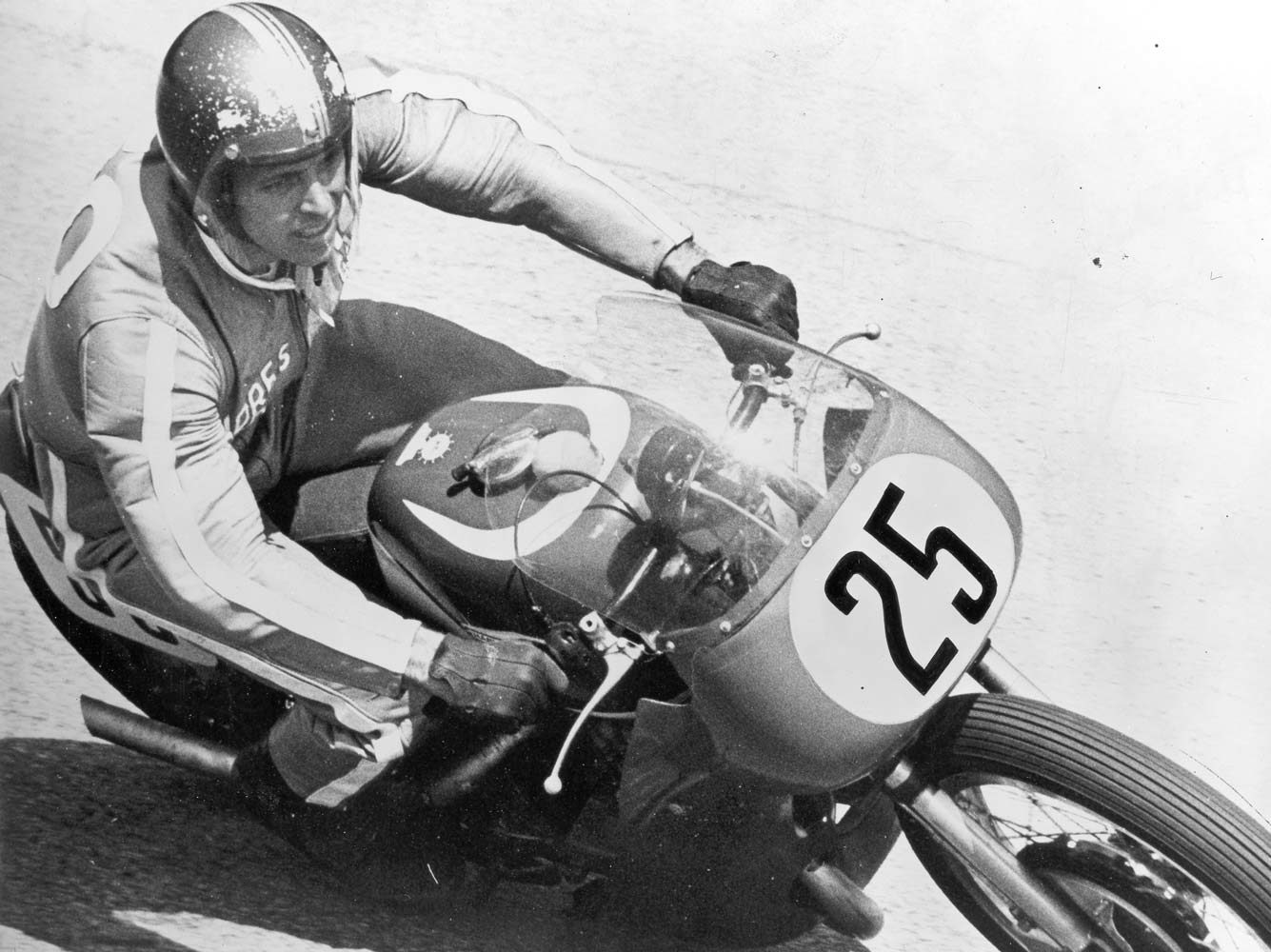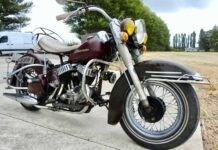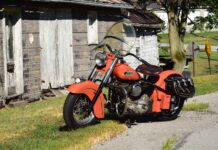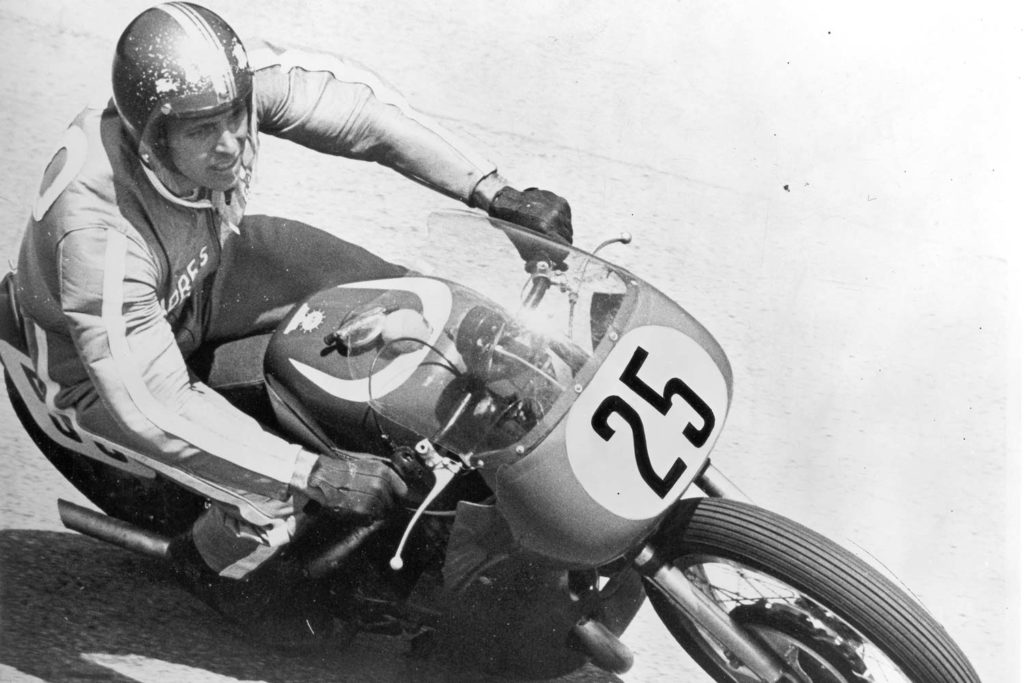
When racing began on the beaches of Daytona, Florida, all the machines entered had side-valve engines. In this “run what you brung” type of competition, Indian and Harley-Davidson battled it out in the sand with no air cleaners and engines that produced less than 40 hp. It was the era of American isolation, and motorcycle racing was more of a good ol’ boys club than a professional enterprise.
Then in 1941, foreigners showed up on Norton Singles, giving away 250cc but sporting overhead valves and winning the race. From then on, beach racing at Daytona was a three-way competition between H-D, Norton, and Indian – although BSA snuck in a win in 1954.
In 1961, racing at Daytona moved from the beach to the newly built Speedway, and the paved circuit was a Harley parade almost every year. Decades of MoCo racers showed up at Daytona in all iterations: the side-valve WRTT and KRTT, the overhead-valve XRTT, and the only one with cams over the pistons, the VR1000.
Related Story: Daytona Bike Week 2022
Even after the introduction of overhead valves on the Knucklehead and the Sportster, the factory racers retained side valves because the MoCo was successful with the flatheads and because the KR was a 750 rather than a 500 as mandated for OHV engines. Incrementally more power was achieved from this design.
Triumph won Daytona in 1962. In 1966, the British company threw everything it had at building a 500cc racebike that could unseat the bigger Harley at the top of the podium. Sure enough, Triumph’s Buddy Elmore handily took the laurels that year, and Gary Nixon rode a Triumph T100R to victory in 1967.
Smug smiles turned upside down in Milwaukee. Something had to be done. A new engine was out of the question, so further intensive development for yet more small gains was undertaken by H-D race boss Dick O’Brien. The problem was there just wasn’t enough left in the KR’s flathead design to create significantly more power. O’Brien was well aware of this limitation and went to the corporate powers for enough money to try a last-ditch effort for the 1968 race.
Related Story: Motorhead Memo: The ballad of Jerry Branch
After two losses in a row, the MoCo was up against a wall. With no way to milk much more out of their archaic flathead KR, O’Brien had to look elsewhere for a solution. Ironically, he looked at the Triumph. It didn’t make any more power than his machines, but it was compact and light, and its small frontal area allowed it to slip through the air more efficiently.
A light bulb turned on in O’Brien’s head. Maybe he could find speed by making a big machine more slippery to the wind. Rather than gaining speed with brute power, adopting a slick bullet shape would enable higher velocities. Months later, the Wixom brothers and a wind tunnel proved him right.
The Daytona 200 of 1968 was a madhouse. The healthy grid of American riders was joined by more top-shelf riders from Europe than ever before, and the increasing numbers of brands added to the international flair. The crowd was the biggest ever, with more folks attending than were at the 24-hour car race a few weeks before.
Harley fans showed up in droves to root for the home team. The veteran flatheads were up against new machinery from everywhere else in the world and looked to be the underdog in this fantastic fight. If that wasn’t enough, speed increases from the previous year had jaws dropping.
Fairings had only been allowed since 1961 and were invariably crude attempts at aerodynamics fitted in case they might help. Other arcane rules, like no more than four speeds in the transmission, would make you think these increases would be predictable, as they were for Triumph’s 1967 winner. In 1968, Triumph qualified 2 mph faster than their winning speed the year before. So far so good.
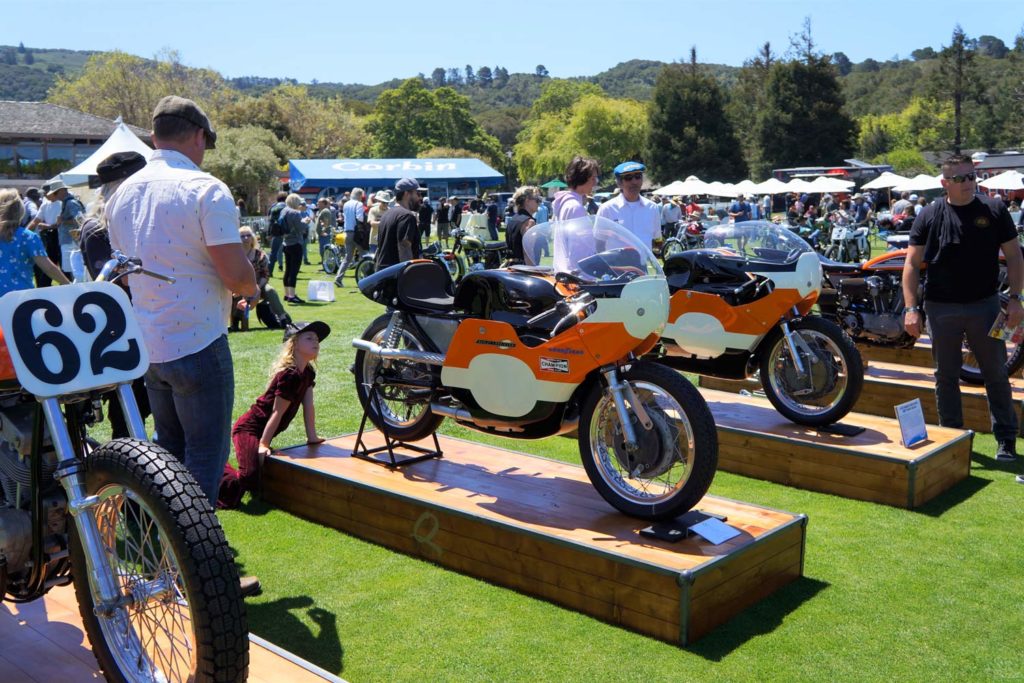
Then the Yamaha TR3 – even with a blocked 5th gear – bombed around the track at an incredible 147.4 mph with Mike Duff aboard. It was no fluke, as Canadian Yvon Duhamel rode his Yamaha to 146.9 mph. Meanwhile, the fastest Triumph managed just 137.0 mph. The difference in speed at Daytona’s banked speedway was insurmountable.
Fans were more than a little shaken up, and in the midst of the clamor came the biggest surprise. O’Brien’s obsolete but properly streamlined and shrunken flathead KR, with Roger Reiman in the saddle, made things right for Hog-dom by qualifying at a truly astounding 149.1 mph.
Qualifying at Daytona is one thing, but the 200-mile endurance race is another. Would the orange-and-black machines hold up at those speeds? For that matter, would the 2-strokes? Suzuki’s promising 500 didn’t, and Honda’s 450 wasn’t a contender. Triumph and BSA were 10 mph too slow but might last. Would the banking pound the bikes into rubble? Would engines overheat? This race was impossible to predict.
It’s said that when the flag drops, the BS stops. As fast as the 2-strokes were, they were too peaky, which hampered exiting turns via the weird 4-cog gearing required for the class. Meanwhile, all four Harley racebikes were bunched in front from the first lap, and in spite of an early challenge by Reiman, by the fifth lap, it was all Calvin Rayborn all the way. Nobody argued that Rayborn was the most naturally gifted roadracer in the country, and his virtuoso ride that day confirmed it, as well as O’Brien’s skill at keeping flatheads fast.
History judges this to be the KR’s finest hour. But it wasn’t its final hour.
Five speeds were finally allowed for the 1969 race. O’Brien didn’t have a 5th cog, and it made him nervous. He knew others had worked on improving aerodynamics as well. His desperate off-season development of long-in-the-tooth flathead KRs was kept secret. New heads, pop-up pistons, megaphones, and double-throat carbs were tested and looked promising in the race shop. Refinement of the aerodynamics, suspension, and tires also showed potential.
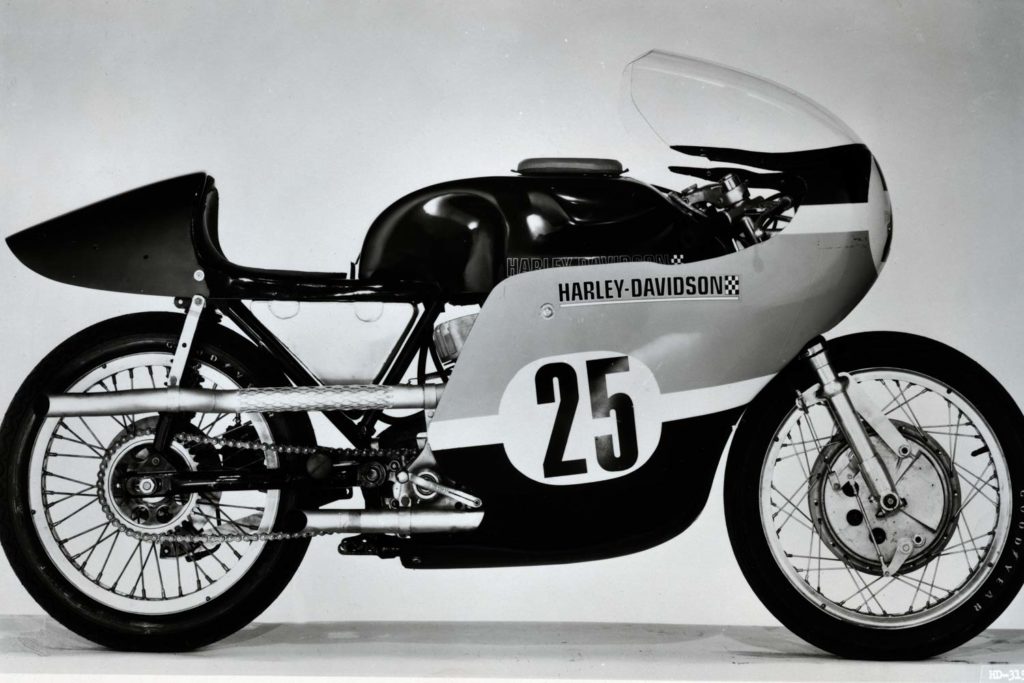
Then came race week, and it all fell apart. For openers, the Yamahas from Fred Deeley in Canada (Duhamel piloting again) broke the magical 150-mph barrier in qualifying by averaging 150.5 mph. Even Suzuki had found more velocity, happily tracking at 146.4 mph.
Meanwhile, Harley’s KR, the only 4-stroke among the top 14 qualifiers, had managed to lose 5 mph in a year. Rayborn only clocked 144.8 mph. This sent Milwaukee’s race crew to the pits for some long hours looking for lost speed. Thankfully, it rained, and race day was postponed for one week.
There has been a debate over the years as to whether this delay afforded an advantage to H-D. If it did, it also helped the 2-strokes, which needed some gearing changes and clutches, since slipping them like mad was the only way they could drive hard out of turns.
In the race, the early laps of the 200 looked like a short-course sprint, with the lead changing 17 times in 19 laps!
When it was over, Rayborn had done it again, winning at an average speed of 100.882, slower than the year before but enough to do the job. The most telling thing of all is that the 100-mile 250cc race that year was won by Yamaha at an average of 98.34 mph, a speed not far off the premier class the KRs played in. The writing was on the wall: It became obvious that the 2-strokes were too fast, and four-cylinder engines would be allowed in 1970’s new rules package. Harley’s KR was at the end of its very long road.

Harley’s flathead era went out with the MoCo on top. More hard work was ahead for O’Brien and his team as they moved on to the OHV XR750. Another story but without a happy roadracing ending.
In 1970, Honda showed the way forward at Daytona with its CB750, and Triumph/BSA Triples sealed the deal in 1971. Yamaha shrieked back in 1972 with its 2-strokes and dominated until 1984. Harley was nowhere. Except for Rayborn winning the overseas Trans-Atlantic series in 1972, the XR750TT proved mostly uncompetitive in roadraces, as did the VR1000 in the 1990s. H-D hasn’t vied for a win at Daytona since the demise of the flatheads.
The poignant post-script? Without any Harley racers to root for anymore, Daytona has become two entirely different events: the races, which some H-D fans don’t care about, and the rally, which they attend in droves.


